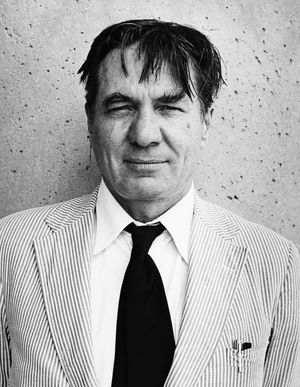In 2001, the poet Gallway Kinnell told Studio 360 that when his sister was dying, it was poetry that offered immense solace to them both.
Poetry is a kind of telling what it is to be alive here and now. And so it does form a kind of record. But for the record that it’s written, it has to get what matters here and now said, and said really accurately and truthfully. Others who may have the same experience, or similar experiences to the person who writes the poem, upon reading the poem can have that experience illuminated by the poem because it says more clearly and more fully what they have thought but not really been able to put to words.
“The Lake Isle of Innisfree” is a poem by Yeats, which I’ve come over the years to respect. It is one of those poems which invites you to put your own life into it as you read it. So every time it’s read in that way, it’s a great poem because it has a person’s life in it. The poem isn’t really finished; it becomes a finished poem when somebody reads it.
When my sister, Wendy, was ill and dying, I used to go drive over to Rhode Island to see her periodically. I would read and recite poems to her, and the poem she loved best was “The Lake Isle of Innisfree.” And Innisfree represented for her whatever world there was on the other side of death, and life had become so painful with her cancer that she was ready to go. She once said, “I’m not afraid of death I just wish it didn’t take so long.”
"The Lake Isle of Innisfree"
by William Butler YeatsI will arise and go now, and go to Innisfree,
And a small cabin build there, of clay and wattles made;
Nine bean-rows will I have there, a hive for the honey-bee,
And live alone in the bee-loud glade.And I shall have some peace there, for peace comes dropping slow,
Dropping from the veils of the morning to where the cricket sings;
There midnight’s all a glimmer, and noon a purple glow,
And evening full of the linnet’s wings.I will arise and go now, for always night and day
I hear lake water lapping with low sounds on the shore;
When I stand on the roadway, or on the pavement grey,
I hear it in the deep heart’s core.
I wanted to read that poem at the service, but, you know, I wasn’t sure I could without my voice quivering with emotion. So, I took my wife, my sister Wendy’s daughter – my niece Nancy and her husband Bert – I took them downstairs to the church, and I said, “Now, let me read this poem to you.” And to the three of them I read it, and tears were falling down all over my face and my voice was cracking and so on. But I got through it. And then, I knew I’d be okay because I had sort of... You know, there are probably two versions of every poem: the crying version and the straight, normal version. So I cried, cried it out to them, and so when I did give it a little while later to the people in the church I was okay.
I think “The Lake Isle of Innisfree” remains open for every reader to put in what they want. Obviously, it has what Wendy put into it. It has it there. Sometimes a poem that describes some really difficult, really difficult experience that maybe most people don’t have is read by somebody in a distant place from where it was written and in a distant time from when it was written; and that person, for the first time reading that poem, feels “Oh, I’m not alone on earth. There is one other.”
(Originally aired: April 14, 2001)

